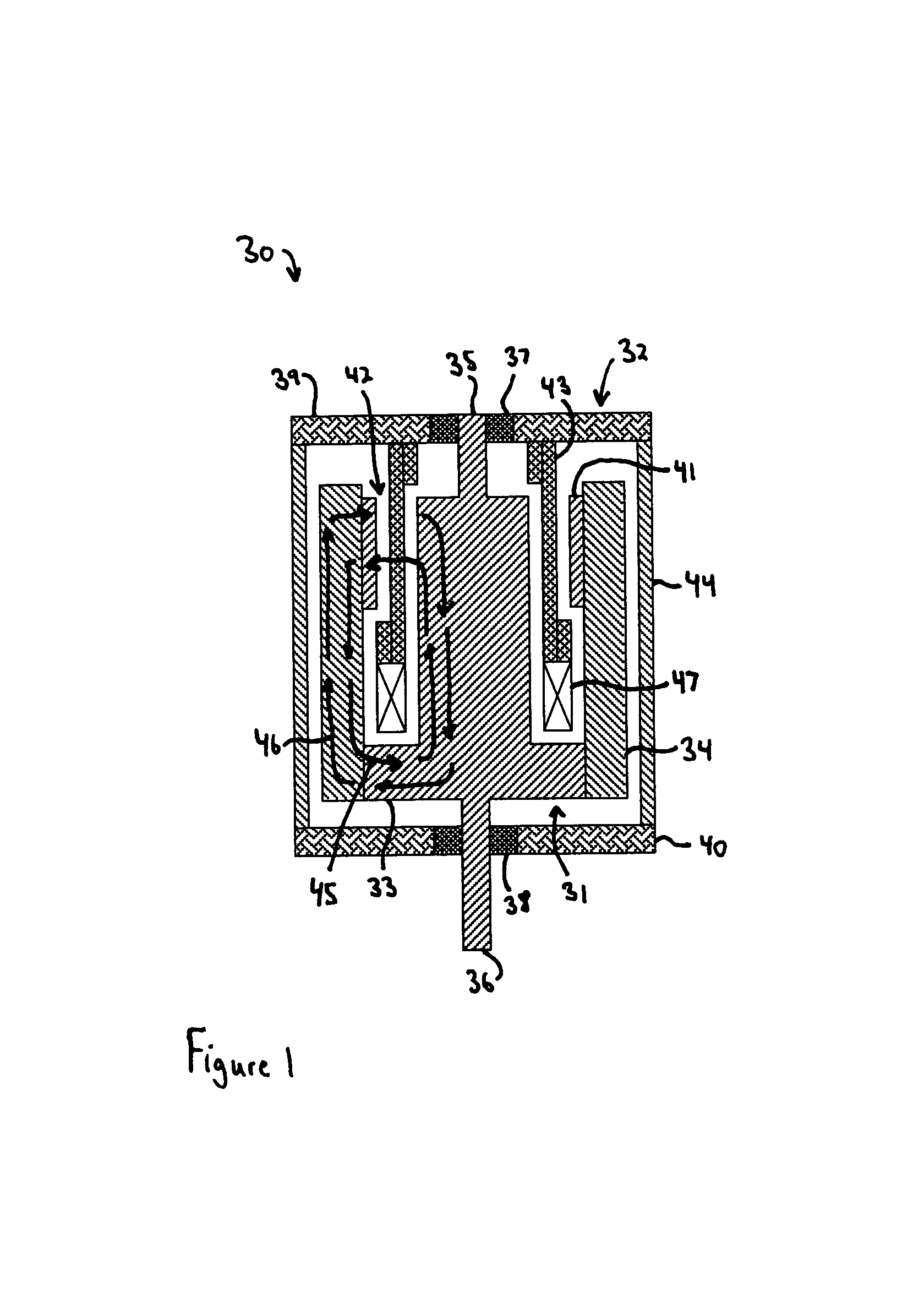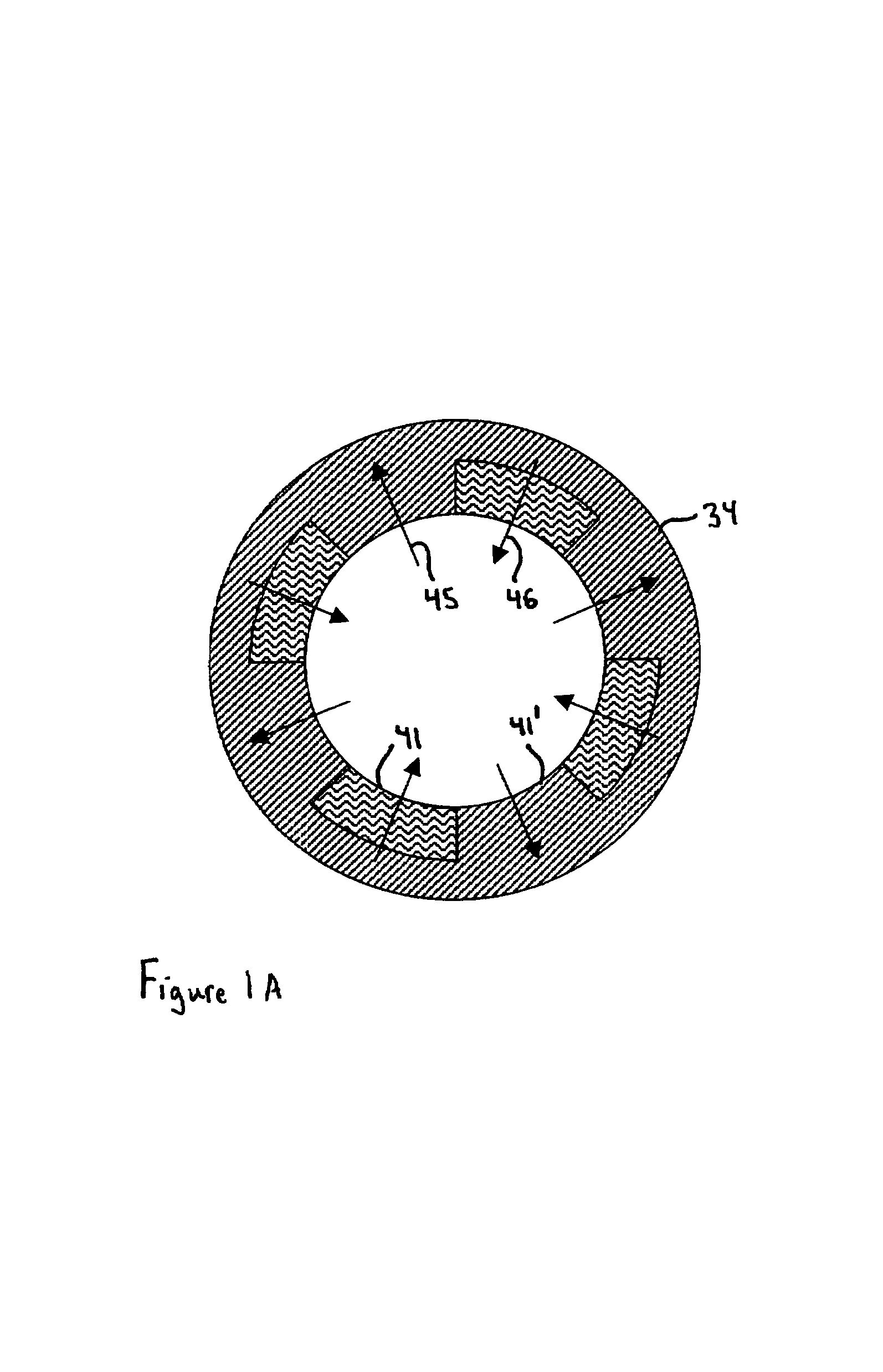Compact heteropolar hybrid alternator-motor
- Summary
- Abstract
- Description
- Claims
- Application Information
AI Technical Summary
Benefits of technology
Problems solved by technology
Method used
Image
Examples
Embodiment Construction
[0033]Turning to the drawings, wherein like reference characters designate identical or corresponding parts, a heteropolar hybrid alternator motor 30 shown in FIG. 1 includes a rotor 31 mounted for rotation within a stationary stator 32. The rotor 31 has a cylindrical ring portion 34 attached to a central core portion 33, both made of ferromagnetic material such as steel. A plurality of alternating, spaced apart permanent magnet poles 41 and ferromagnetic poles 41′ are arranged in a regularly spaced array around the inner circumference of the ring portion 34, as shown in FIG. 1A. The poles 41 and 41′ face an armature air gap 42 that is created between the two portions 33, 34 of the ferromagnetic rotor 31. In this configuration of the invention the permanent magnet poles 41 are located on an inner circumference of the outer ring 34 so that the ferromagnetic rotor structure radially reinforces the magnets 41 against centrifugal loading. The permanent magnets 41 generate permanent magn...
PUM
 Login to View More
Login to View More Abstract
Description
Claims
Application Information
 Login to View More
Login to View More - R&D
- Intellectual Property
- Life Sciences
- Materials
- Tech Scout
- Unparalleled Data Quality
- Higher Quality Content
- 60% Fewer Hallucinations
Browse by: Latest US Patents, China's latest patents, Technical Efficacy Thesaurus, Application Domain, Technology Topic, Popular Technical Reports.
© 2025 PatSnap. All rights reserved.Legal|Privacy policy|Modern Slavery Act Transparency Statement|Sitemap|About US| Contact US: help@patsnap.com



